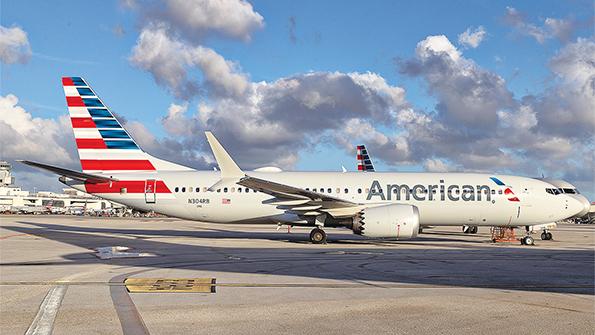
Most of the changes Boeing is making to the 737 MAX family in the wake of two fatal accidents and a 19-month grounding affect flight operations, but the fleet’s return will bring some changes to maintenance programs as well.
The major technical change for the MAX is revised flight control computer (FCC) software. One change is a revamped Maneuvering Characteristics Augmentation System (MCAS) flight control law, a function of the speed trim system (STS) that provides automatic nose-down horizontal stabilizer inputs in certain flight profiles. The software changes also add redundancy through FCC cross-monitoring.
The software revisions prompted a working group—including representatives from Boeing, several airlines, the FAA and Transport Canada—to review parts of the MAX maintenance program. Among the issues reviewed were Maintenance Significant Items (MSI) developed through the Maintenance Steering Group-3 process used to determine maintenance tasks and intervals.
The review led to one additional task: an operational or built-in test-equipment check of the MCAS signal to the horizontal stabilizer trim motor every 6,000 flight hours. The new task is part of MSI-22-11, Autoflight/Digital Flight Control System and was approved by an industry steering committee for inclusion in the 737-8/9 Maintenance Review Board Report, the FAA says.
Besides the new task, 737 MAX-family maintenance manuals will include more descriptions of systems linked to the MCAS and how it functions. Unlike the original MAX flight crew manuals, which did not include discussion of the MCAS, revised maintenance documentation references the system as part of troubleshooting. Boeing’s revisions include adding significant detail to both flight crew and maintenance manuals about the MCAS’s functionality.
In addition to the airplane maintenance manual changes, the Collins Aerospace component manual for the angle-of-attack (AOA) sensors include a final check “intended to prevent a repair shop instrumentation error,” the FAA says. Both MAX fatal accident sequences that led to the model’s grounding—Lion Air Flight 610 in October 2018 and Ethiopian Airlines Flight 302 in March 2019—started with faulty AOA data inputs to the FCC, triggering the MCAS when it was not needed and resulting in uncontrollable dives. Investigators determined the Lion Air 737-8’s left-side AOA was improperly calibrated during a repair at a third-party repair station.
The software changes and broader flight control system reviews prompted several master minimum equipment list (MMEL) changes that the FAA published earlier this year. The most significant operational issue is that MAX-family aircraft must have both of the dual FCCs, including auto-pilots, operational for dispatch.
The original MAX MMEL, approved in 2018, allowed dispatch without either autopilot functioning so long as the planned route times were not too long, routes and approaches avoided airspace that require an autopilot, and the pilots assigned to the aircraft, who would face higher workloads when hand-flying, did not object. All other 737s have similar conditions.
Other changes to the MAX MMEL require an operational STS, certain STS warning lights and a functioning Autopilot Disengage Aural Warning System.
Two of the warnings now required to be functional for dispatch are the Speed Trim Fail and Stab Out-of-Trim lights.
“The updated FCC software uses existing maintenance messages to trigger the Speed Trim Fail and Stab Out of Trim warning light for internal faults to the FCC,” the FAA says. “For certain potential AOA failures, such as physical failure due to damage or a miscalibration, the updated FCC software reduces crew workload by inhibiting MCAS activation and presenting the Speed Trim Fail alert (which has no associated crew tasks).”
The grounding of the 385-aircraft MAX fleet has been prolonged by regulators seeking more changes and more validation that certain failures do not present safety-of-flight risks.
As of mid-October, prospects for regulatory approvals by year-end looked promising. Flight tests of the revamped software by the FAA, European Union Aviation Safety Agency (EASA) and Transport Canada did not reveal any major issues, and a joint regulatory board signed off on proposed training. The FAA is reviewing more than 220 sets of comments on a proposed return-to-service blueprint, published in a draft airworthiness directive (Inside MRO September, p. MRO5), that outlines steps operators must take. Once the directive is finalized, operators regulated by agencies that lift MAX operations bans can begin preparing their MAXs for flight, including obtaining approvals for updated flight and maintenance manuals. Boeing can also start updating the 470 MAXs it has built but not yet delivered.





